It will be the first Centenary in contemporary art’s history, the one opening on November 4th in Vittorio Veneto; an event whose aim is to share the beauty of art with the places that lived the uglinesses of war, 100 years after the ceasefire. It’s the celebration of the purity of peace through aesthetic, in a long-term event reminding of those Biennales so rich in past. With the difference, in this case, the past is just historical memory and its present has a name: “1918. When peace erupts”, an international event whose aim is to commemorate the places of WWI through contemporary art. “A small city as Vittorio Veneto actually is a place carrying a heavy baggage of tensions, concentrated yet stretching between the past and the preset” said Dimirti Okerzov from the Department of Contemporary Art of the State Museum Hermitage, St. Petersburg “and it is important for every city to always think about both its past and its future”. And the fact this “call to arts” comes for Vittorio Veneto, a small town in Treviso area and scarred by WWI is not casual: it was here, in the small and characteristic Vittorio Veneto that Austria surrounded in 1918, marking the end of the war. This year, 100 years later, 13 internationally acclaimed artists coming from the countries that fought each other during the war will turn those page to start a new one, bright and intense this time, with their minds as their only weapons. Each of the 13 artists have realised a permanent, site-specific artwork for the city of Vittorio Veneto. At Ozerkov’s presence, the artists will present their artworks to the public on November 4th, marking the stops of an actual public and urban art march across the historical centre of the town, shaping it for the next 100 years when new artists will be asked to represent a new Centenary. The installations – as charming and conceptual as only contemporary art can be – continuously recall of the eternal themes of peace and war. “With such an ambitious artistic project, we attempted to elaborate peace for everyone, in a way that is so typical for contemporary art – through a language that may seem cryptically, but that is the language of the present and the communication medium of the future times. Once we conquer peace, we can finally make art ” says Ozerkov, as he adds “with this project, we immediately marked a new reference point for art in Europe”.
The artworks:
Limbo by Dario Agrimi (Italy)
Installation on indoor floor, 100×200 cm
Disappearing in a thin black puddle where it can’t possibly fit and imprisoned by contemporary consumerism lies the insignificant, struggling creature that can only witness the passing of the days: Man. It seems like the punishment for those who don’t see the light – to fall in this limbo made of oil.
Apertures by Bill Balaskas (Greece)
Neon installation, 150×200 cm
Apertures’ neon lights “give sight”, meaning they represent and multiply the small amount of light that filtered, exactly in this form, through the Alpine’s masks employed during the battles of WWI. This piece of art co-exists in two places at the same time: one eye is in Vittorio Veneto, and the other one is in Austria, giving us a sight on each one of the sides involved.
Rain of Ashes by Anaïs Chabeur (France)
In-loop video, 9’20”
There’s no time and there’s no space in Rain of Ashes, representing a never-ending memory capable of trespassing mountains and the centuries in a video; a rain of ashes incessantly covers everything that lies under its surface, as we witness its appearance and disappearance exactly like the never-ending alternation of war and peace.
We can move mountains by Alice Cunningham (UK)
Iron and concrete outdoor installation
Mount Ortigara, reduced of over 8 meters after a series of explosions, gains its grandeur back in the eye of the observers thanks to the majestic outline of We Can Move Mountains, a bridge of peace between past and future. A majestic iron structure this mount, a war veteran, a solid top again – at least, to appearances. The space around the installation gradually extends toward the slopes of the scarred mount, reminding of a past that has now been given a new appearance
Untitled by Andrey Kuzkin (Russia)
Hanging iron installation, 200×300 cm
Calls for peace are never effective enough, war is a part of the human being in transforming the places, it keeps existing and it turns world upside down. The sign shows a message that is the piece of art itself, as it represent the tragic dualism that is innate in mankind: calling for peace through conflicts and heroes’ pride.
Unstill by Johanna Jaeger
Video, 20’
To be able to observe the flowing of time is the sense of the video Unstill, which registers the way the slow dissolving of a liquid into water creates a drawing, liquid itself. Scanned by the severe and real needles of the two big clocks in front of Palazzo Todesco, this piece of art is a reflection on the visual perception of time. Attraverso le gocce, il movimento veloce si trasforma in un movimento lento, fino a quando quasi nessun movimento è visibile perché le gocce sono ormai depositate.Through the drops, the rapid movements becomes a slow one, up to the point almost no movement is visible – as the drops have already sunk.
For disappeared memories by Zsolt Asztalos
Marble wall installation,15 pieces 30×42 cm, 1 piece 15×42 cm
Peace – or long live them – to memories with the For disappeared memories memorial, empty in words and engravings yet rich in the historic knowledge of all wars and of what can not be remembered, rich in countless, forgotten stories or those of the survivors that are not able to talk, stories bound to be forgotten.
Memento mori by Sarah Smolders
Painting and spray paint on outdoor floor, 2230×3450 cm
The empty space of the square where some houses, including Minucci House, used to be become a new frame, containing the memory of our collective history: a memory – sometimes – of loss. Memento mori recreates old borders on the flooring, shaping a lost place and memories. The square being the blank piece of paper to draw the outline for new foundations on
Landscapes by Nina Ivanovic
Wire wall sculpture, 180×180 cm
Five drawings reveal a sole, big landscape, a witness of war and peace, that is represented here as a whole: a steel strand gives life to the scenery of Vittorio Veneto, with its rivers, mountains, land and sky. A new landscape made only of beauty and simplicity, with no need to represent nor to remember horrible and devastating things such as war is.
Mapping 1 by Philip Topolovac
Installation indoor floor, 420x415x34 cm
16 moulds compose a large, muted map of a nondescript place, in an attempt to shape the world and the relationship occurring between mankind and its planet, resulting in a mechanical reproduction of reality. Mapping 1 represent a place yet not talking about it, maybe the way visible world never will talk about the world itself, an empty shell with a superficial shape.
Today is the tomorrow of yesterday / Today is the yesterday of tomorrow by Doplgenger (Serbia)
Neon installation, letters height 10 cm
The luminescence of the writing Today is the tomorrow of yesterday / Today is the yesterday of tomorrow holds a lesson that is clearly of peace: actions are the past of consequences. Change, time, responsibility are only a couple of the concepts this clear writing hints to.
Sleeping laborers by Anna Hulacová
Aluminium sculptures, 130x70x15 cm
The two Sleeping laborers are a combination of ancient and new world. They could represent nowadays’ peasants or war-deceased peasants, or again peacefully sleeping mummies.These sculptures, reminding of folk culture, aim to be a link with an old technique of butter-mould s production, whit which the “sleeping laborers” have been created
Surface study by Christiane Peschek
Photographic installation on canvas, 200×300 cm
In the installation “Surface Study” , Christiane investigates the vulnerability and recovery of human surfaces based on photographic material. Textures that are at once familiar and yet alien, a skin without a body, tearing down conventions and focuses on the human aspect of war. In a postproduction process she applies digital healing tools on injuries and violation of human skin. The ability of skin to heal itself is prolonged to the digital possibilities to recover of past injuries.
Info:
1918. When Peace Erupts
city centre of Vittorio Veneto (TV)
opening November 4th, 2018 at 3 PM
general organization Villaggio Globale International
curated by Dimitri Ozerkov – Museo Statale Ermitage
 Christiane Peschek, Surface study, photographic installation on canvas, 200×300 cm, 200×300 cm
Christiane Peschek, Surface study, photographic installation on canvas, 200×300 cm, 200×300 cm
 Anna Hulacová, Sleeping laborers, aluminium sculptures, 130x70x15 cm, 130 x 70 x 15 cm
Anna Hulacová, Sleeping laborers, aluminium sculptures, 130x70x15 cm, 130 x 70 x 15 cm
 Dario Agrimi, Limbo, installation on indoor floor, 100×200 cm
Dario Agrimi, Limbo, installation on indoor floor, 100×200 cm
 Bill Balaskas, Apertures, neon installation, 150×200 cm
Bill Balaskas, Apertures, neon installation, 150×200 cm
 Anaïs Chabeur, Rain of Ashes, In-loop video, 9’20”
Anaïs Chabeur, Rain of Ashes, In-loop video, 9’20”
 Alice Cunningham, We can move mountains, iron and concrete outdoor installation
Alice Cunningham, We can move mountains, iron and concrete outdoor installation
 Andrey Kuzkin, Untitled, hanging iron installation, 200×300 cm, 200×300 cm
Andrey Kuzkin, Untitled, hanging iron installation, 200×300 cm, 200×300 cm
 Johanna Jaeger, Unstill, video, 20’
Johanna Jaeger, Unstill, video, 20’
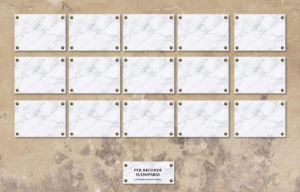 Zsolt Asztalos, For disappeared memories, marble wall installation,15 pieces 30×42 cm, 1 piece 15×42 cm
Zsolt Asztalos, For disappeared memories, marble wall installation,15 pieces 30×42 cm, 1 piece 15×42 cm
 Sarah Smolders, Memento mori, painting and spray paint on outdoor floor, 2230 x 3450 cm
Sarah Smolders, Memento mori, painting and spray paint on outdoor floor, 2230 x 3450 cm
 Nina Ivanovic, Landscapes, Painting and spray paint on outdoor floor, 180 x 180 cm
Nina Ivanovic, Landscapes, Painting and spray paint on outdoor floor, 180 x 180 cm
 Philip Topolovac, Mapping I, installation indoor floor, 420 x 415 x 34 cm
Philip Topolovac, Mapping I, installation indoor floor, 420 x 415 x 34 cm
 Doplgenger, Today is the tomorrow of yesterday / Today is the yesterday of tomorrow, Neon installation, letters height 10 cm
Doplgenger, Today is the tomorrow of yesterday / Today is the yesterday of tomorrow, Neon installation, letters height 10 cm
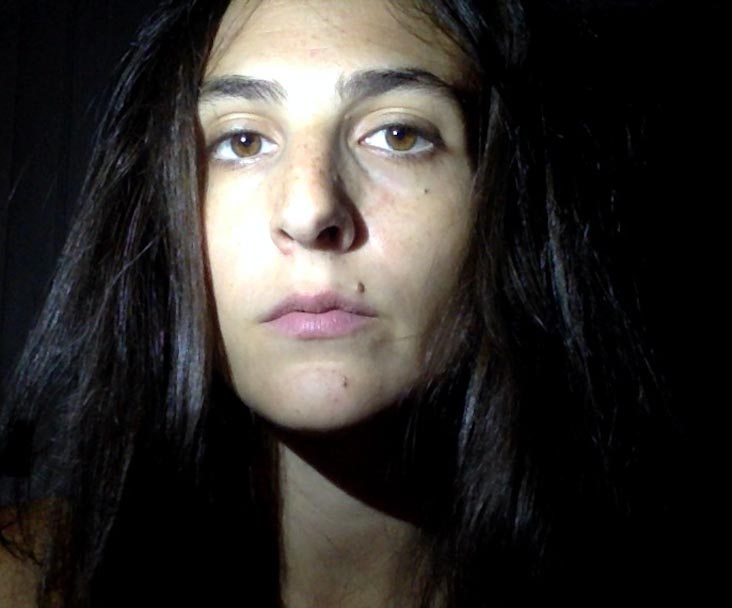
Author and journalist from Treviso. She has published Girini with which she won the Mazzacurati-Russo award (d’if, 2012), Club dei visionari (Di Felice, 2014), Balena (Prufrock spa, 2014), La susina (d’if, 2015) and the audiobook Nella notte cosmica (Luca Sossella, 2016).



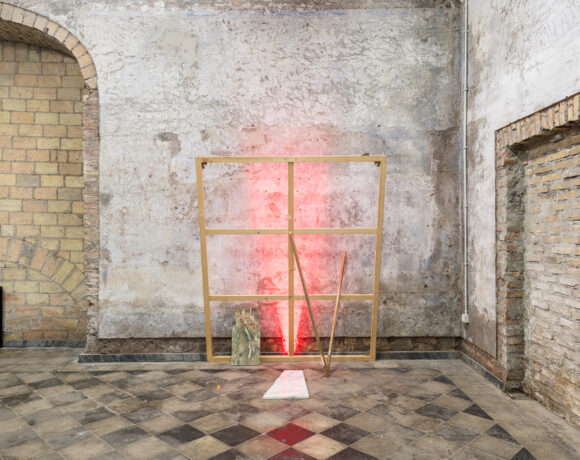
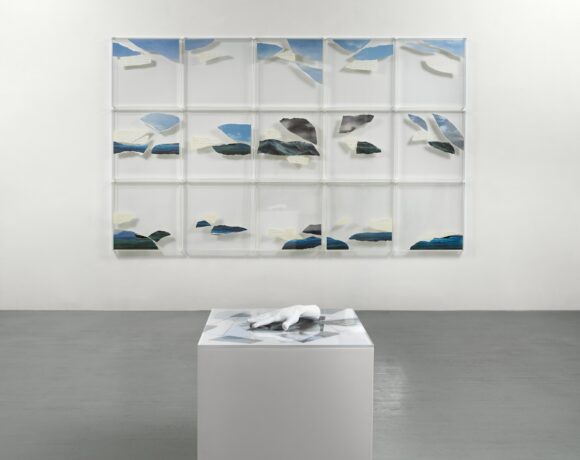
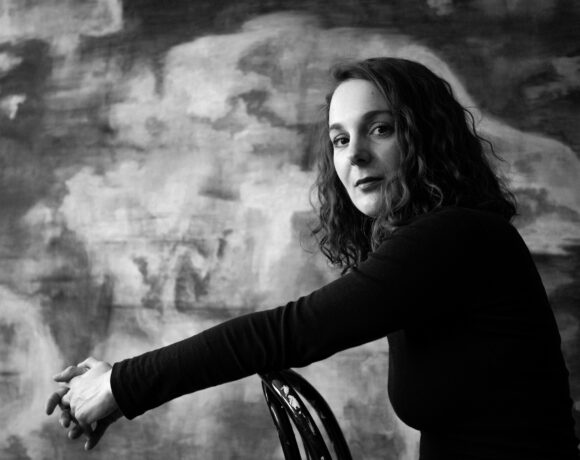

NO COMMENT